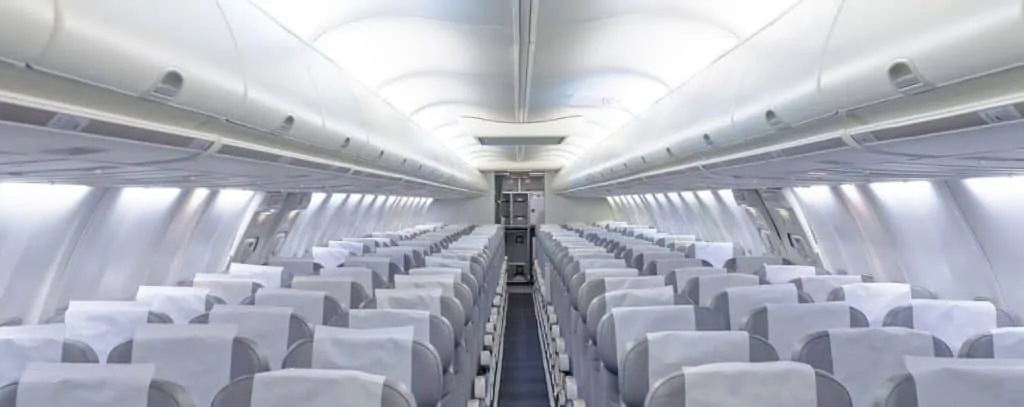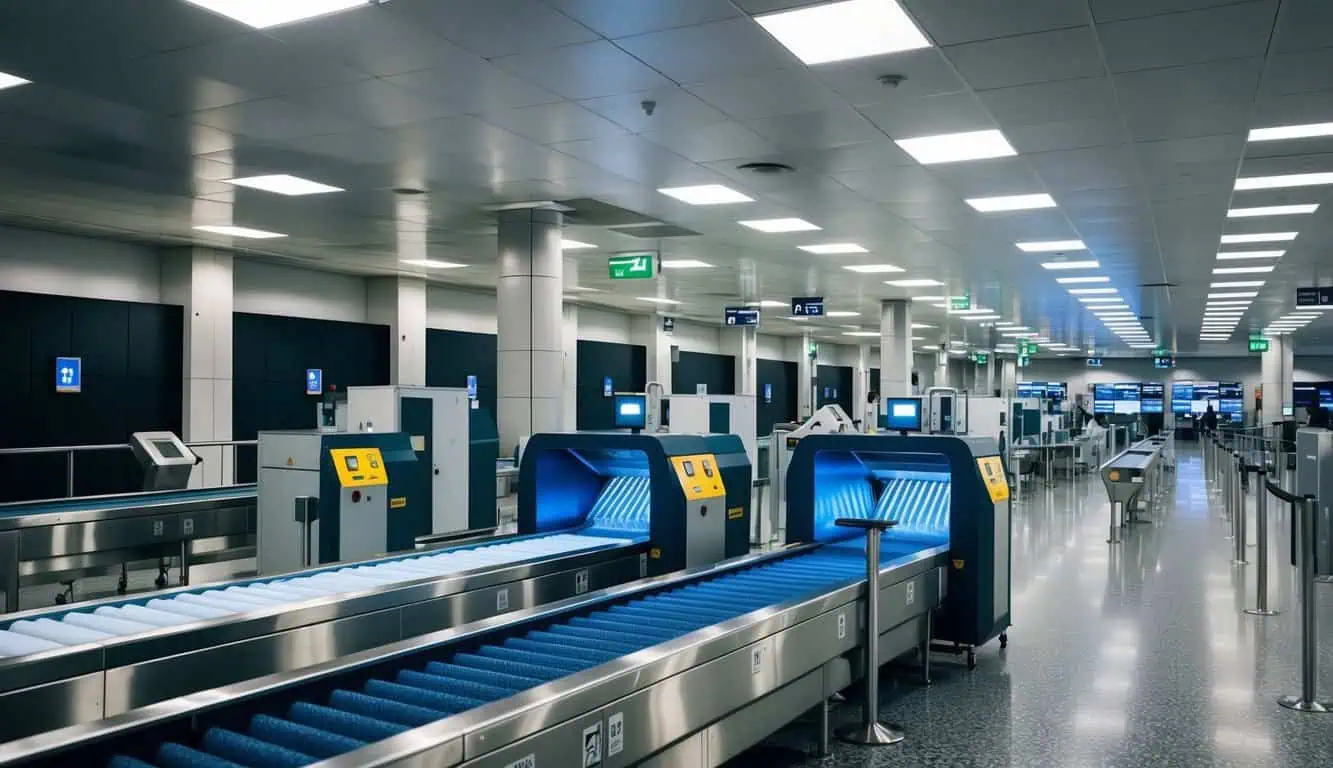If you are flying with children, the best place to sit on a plane is wherever offers the maximum amount of space and a minimum amount of hassle.
There is no doubt about it: when flying with children, kids must sit with their parents, which is more important than where on the plane to reserve seats. However, after ensuring this, where you sit together can make a big difference in how enjoyable the flight will be.
You should ensure the airline understands that you are booking adults and children. Some airlines suggest that you let them know at the time of booking by calling reservations so that all seats are chosen together, even if you book online.
Key Takeaways
- The best place to sit on a plane with a baby is generally in the bulkhead row, as it provides extra legroom and a bassinet attachment for infants.
- The best place to sit on a plane with a toddler is typically in the bulkhead row, as it provides more legroom and ample space for the child to move around comfortably.


It is very important that children, particularly young children, need to be with their parents on a flight, so find out what your airline requires before finalizing your tickets. After booking, if something needs to be changed, you should notify the airline as soon as possible.
Flying with children is stressful enough without the stress of seat choices, so working with your travel agent or airline will help reduce this stress.
There are some places that parents tend to gravitate toward on a plane. These places are located in different areas of the plane for different reasons described below.
Contents
Where is the best place to sit on a plane with kids?
The best thing is to decide what will suit your family the best when flying with children. The following are places where many parents choose to sit and their reasons.
You will see that some of these are opposites as each family has different needs. You will find what works best for you.
Bulkhead seats
Many parents consider these the best seats on a plane when flying with children. These seats offer the most additional room in any area on the aircraft. You can stretch out more, and your kids may have more freedom of movement. If you are breastfeeding, you will be able to remain more concealed if you want privacy.
Opposite aisle seats
If you and your partner can get seats across the aisle from each other, it can help mobility. If you are in the aisle and middle, one of you will have more trouble getting out if your child needs more care. If you each have an aisle seat, one parent can get up at a time without having to move around as much.
Their own seat
Paying for your child under two to have their own seat is an excellent option if you can afford it. Children under two are allowed to sit on parents’ laps rather than having to pay for a separate ticket and seat.
Sitting in separate seats means you will be less crowded, which may keep your baby/toddler from getting restless.
Your seat on your lap

For some children, being a lap infant may be a better solution, and it also means you will not usually need to pay for them if they are under 2 years old.
It can be quite wearing to have an infant on your lap for many hours, particularly if the flight is full. I remember a 4-hour flight with my son when he was 18 months old that seemed like 10 hours!
TIP: If you are traveling with a partner and one child that you intend having on your lap, try to book your two seats as a window and and aisle with the middle seat still showing as being available. That way the middle seat is less likely to be booked as they are the least popular seats. If no-one books it then you will have more room and be able to let the child sit in the spare seat during the flight. If someone does book the middle seat they will be more than happy to swap with one of you so you will still be together.
Back of the plane
If the bulkhead is too expensive or unavailable, consider sitting in the back of the plane. This minimizes your chances of being in someone else’s way and means you will be close to the toilets, which can be quite important when flying with children.
You may also be lucky and find another child at the back who may help entertain your child.
Lie-flat seats
Not all flights have this option, but when it is available, go for it! Children will be much happier when they can lie flat.
Even if they are unavailable, you can effectively do the same thing by using an inflatable leg rest that can be used level with the seat. In this way, your child can lie flat and sleep properly.
The Flypal Inflatable Foot Rest is one of the few that can do this, so it may be worth considering, particularly if you are traveling on a long flight.

After all, nothing is worse than a tired, grumpy child getting on your nerves and other passengers’ nerves.
Sit together
If possible, sit with everyone in your family together. However, this is not always possible. Here are a few scenarios.
- Families of 2-3 can usually stay together. If you end up split on a row, you may be able to switch with the person in the middle.
- Best plane seats for family of 4 – Families of 4 can often split with one parent taking one child and the other taking another.
- Best plane seats for family of 5 can be challenging. The central aisle often contains 5 seats on very wide-bodied aircraft, so they might be ideal. If not, then one parent will generally need to sit with one and the other parent with two children, perhaps in the row behind.
- If your family is larger, figure out who is the most responsible and arrange seating so each child is with or near a parent.
Best seats on a plane with a baby
On some aircraft, the bulkhead seats have a bassinet for a baby, so these are ideal if you can get one.
Some airlines offer bassinets for small children, particularly on long-haul flights. If your airline does, you can request one of these sometimes before reaching the airport, and it is worth doing as there may be other passengers flying with children so that they may be in short supply. Some airlines only offer the ability to request a bassinet at the gate.
Where is the worst place for my child on a flight?
- Middle seats. While most things are relative, there are places you do not want to sit your child on a flight. You will not want to travel with your child in the middle seat if there is a stranger on one side of them. The child may be uncomfortable or may stretch into the stranger’s space.
- Alone. Never put your child in a situation where you are not sitting in their row. They may get scared or confused.
- Emergency seating. Most airlines will not allow children to sit in emergency rows. If this happens, notify the airline and see if they can rearrange seating since you will be with your child.
- The back. While the back of the plane may be suitable for some children, remember that it is louder back there. Children with noise aversions will be less likely to remain happy in the back.
- The front. The front of the plane often has travelers who are trying to avoid parents and children. Unless you are in the bulkhead, a row in the front of the plane may be less than ideal.

Should I choose my seats ahead of time?
This is a personal choice. Many people will say that you should certainly do this, but some airlines will say you can notify them that you are a family traveling together. You must do what you feel is best for you. Finding the best seat sometimes comes with added cost, so you may consider this. Choosing your seat should ensure that your family is seated together. This will prevent surprises at the gate.
How can I change seats?
Arrive early and talk to the airline if you booked your flight and were not seated in an ideal location. Sometimes, there is nothing they can do, but if they understand you are a family, they will often be able to rearrange some things to help you out.
Sometimes, airlines have programs that will allow you to arrange for there to be empty seats nearby. These are not free, so be warned that this will be an extra expense.
Should we take upgrades?
Maybe, but probably not. If you are flying with children, particularly young children, who may fuss the whole flight, business and first-class passengers are not likely to take it well. This will most likely cause you more stress. However, if the upgrade is to a bulkhead seat, take it. This can give you more space, keeping you from being uncomfortable.
Can an airline sit a child away from a parent?
Every airline has its policies regarding trying to sit parents and children together. Most will try to ensure that your children over 2 years old sit next to a parent, but the FAA has no specific rules regarding flying with children that say this must be the case.
The best advice to ensure you sit next to your child is not to leave it to chance and book seats next to each other, even if this does involve extra expense.
If your flight does not allow pre-booked seats, choose your seats when you enter the aircraft. Then, ensure you are at the front of the line at the gate. Do not be one of those parents who annoy me, get on last with 2-3 children, and then complain to the crew that they can’t sit together.

Airline family seating policies
These are links to the relevant family seating policies of some of the major airlines.
- Alaska Airlines
- American Airlines
- British Airways
- Delta Air Lines
- Frontier Airlines
- Hawaiian Airlines
- JetBlue Airways
- Southwest Airlines
- Spirit Airlines
- United Airlines
How else can I make my flight with children worry-free?
You can’t be worry-free when traveling with children, but here are some things you can do to make the most of your flight.
- Bring food – Children are often grumpier when they are hungry. No matter where you are on the plane, a hungry child is rarely pleasant. Bring snacks for your child. Feeding very young children on take-off can minimize the pain in their ears.
- Bring entertainment – Entertainment for you and your child will go a long way. You can keep them happier if you have something for them to do. Even crayons and paper can sometimes soothe a bored child. Play games or do things together.
- Bring patience – This one is harder but probably the most essential. Being stressed out will not make for a pleasant flight. Children also know when their parents are struggling. This often makes them more anxious. It will not last forever. Take a deep breath and keep going.
- Bring Supplies – Babies will need things during the flight. Take a survey of the things you use on a typical day. See which things can be used on an airplane. Some things will not be feasible, but you will need diapers, wipes, clothes, pacifiers, and other comfort items.
- Accept help – If you are struggling and need a flight attendant to help, ask them. If a stranger offers help, trust your gut instinct. Let the grandmother give you tips for soothing a fussy baby.
- Split up – Split up kids who may be more likely to fight during a flight. No one wants to watch children fight on a flight. If you can, put a parent between the children. If you cannot separate them, try to give them different things to do and have a system for trading. Minimize the conflict as much as possible.
Is there anything else I need to know about seating?
You may not get the ideal seating you want, but you will survive, so don’t fret about it too much.
If you are flying domestically, the flight won’t usually be that long, so whatever the situation, you will not have to put up with it for too long.
If you are flying internationally, ensure you know the policies you must follow in addition to your seats when disembarking and for return flights.
You will do fine. You need to give yourself time and space.

Related articles
Flying with a 2 year old on a plane – how to survive it
Can you take baby wipes on a plane
How to pack a car seat for checked baggage
Does a 3 year old need a plane ticket?

I have been traveling around the world by air since the early 70s and living overseas too. I worked for British Airways for a number of years and I am also a private pilot. About Me


